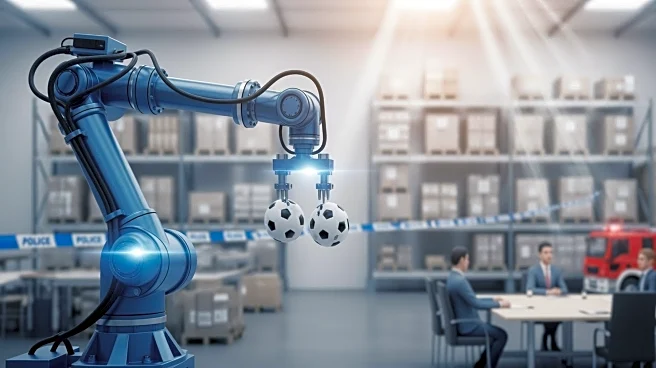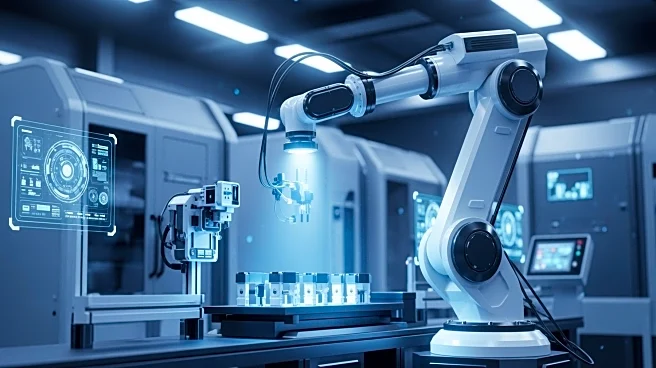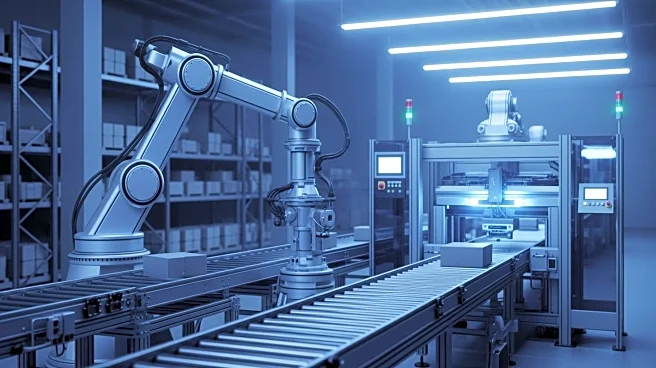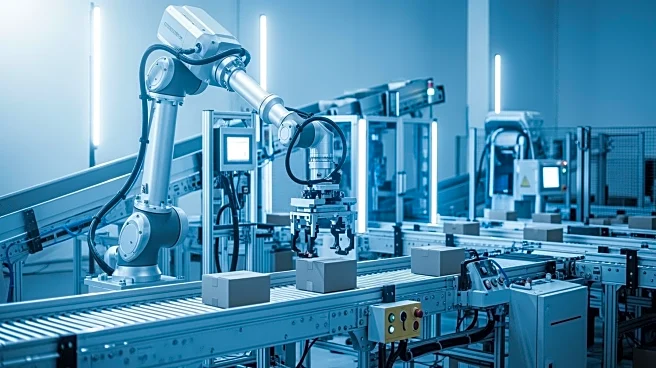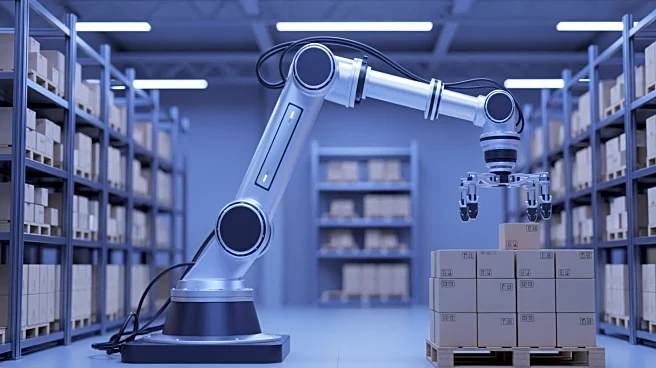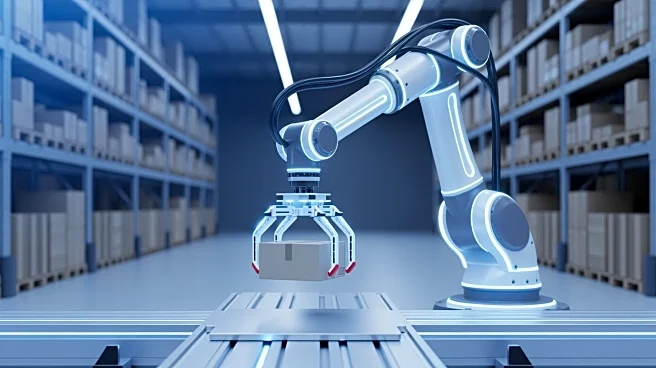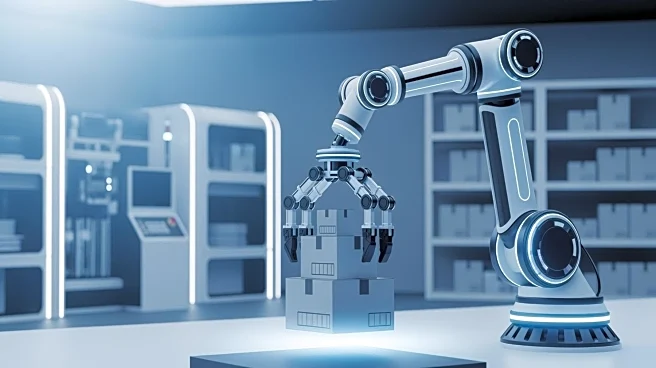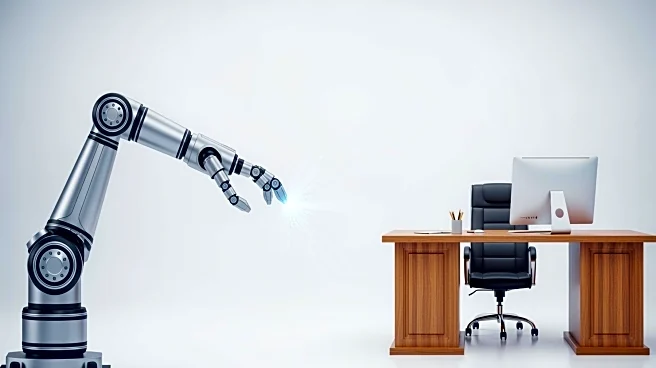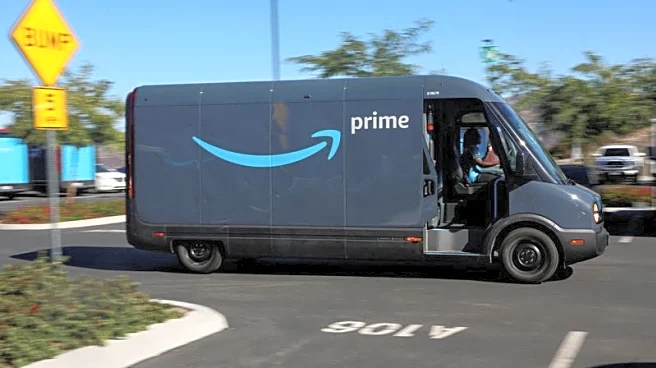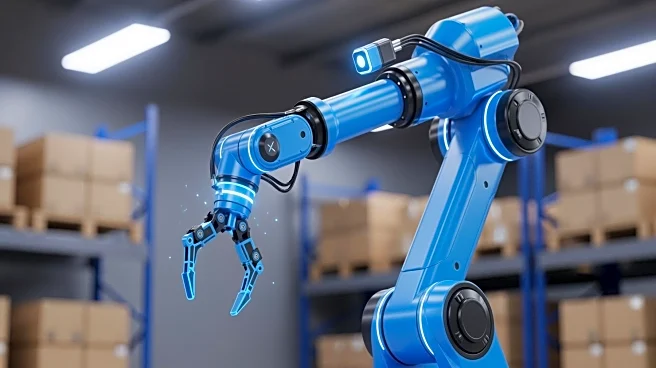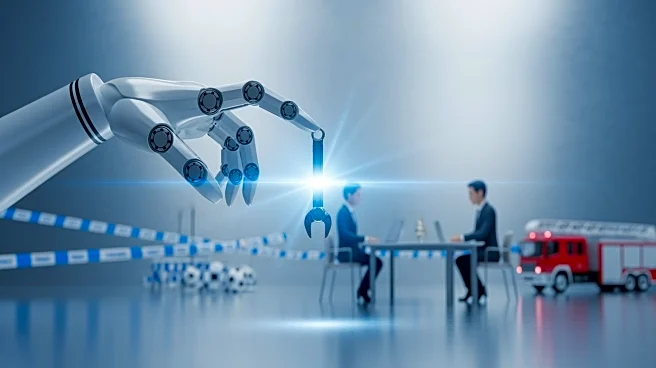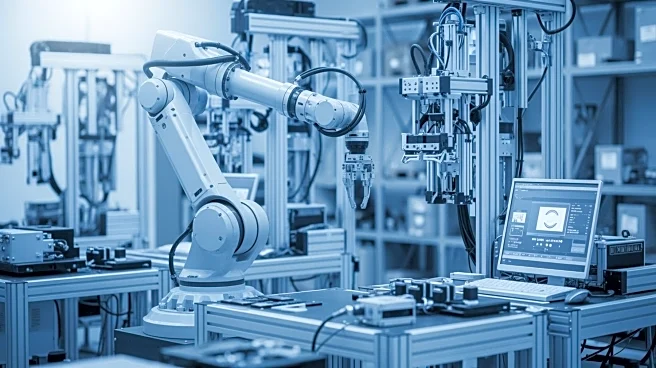What's Happening?
Amazon has unveiled two significant technological advancements aimed at improving its fulfillment operations: the Blue Jay robotics system and Project Eluna, an agentic AI model. Blue Jay is a ceiling-mounted automation system that synchronizes multiple
robotic arms to perform tasks such as picking, stowing, and consolidation, which previously required separate stations. This system is currently being piloted in South Carolina, handling a wide range of item types. Project Eluna, on the other hand, is designed to assist operations managers by providing data-driven recommendations to optimize workflow and prevent bottlenecks. Both innovations are intended to enhance safety, reduce repetitive tasks, and support employee decision-making.
Why It's Important?
The introduction of Blue Jay and Project Eluna represents a significant step in Amazon's ongoing efforts to automate its logistics and fulfillment operations. By streamlining processes and improving efficiency, Amazon aims to accelerate delivery performance, which could enhance customer satisfaction and strengthen its competitive position in the e-commerce sector. For employees, these technologies promise to reduce physically demanding tasks and improve workplace ergonomics, potentially leading to better job satisfaction and new career opportunities. The broader impact on the industry could include setting new standards for automation in logistics, influencing other companies to adopt similar technologies.
What's Next?
Amazon plans to deploy Project Eluna at a Tennessee fulfillment center during the holiday season, focusing on sortation optimization. As these technologies are further integrated into Amazon's operations, the company may expand their use to additional facilities, potentially leading to widespread changes in how fulfillment centers operate. Stakeholders, including employees, customers, and industry competitors, will likely monitor these developments closely to assess their effectiveness and impact on the market.
Beyond the Headlines
The deployment of advanced robotics and AI in fulfillment centers raises questions about the future of work and the role of human labor in increasingly automated environments. While Amazon emphasizes the benefits for employees, such as reduced physical strain and new career pathways, there are potential ethical considerations regarding job displacement and the need for retraining workers to adapt to new technologies.
